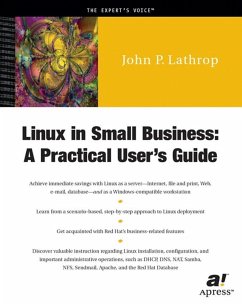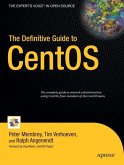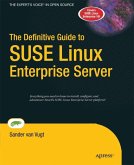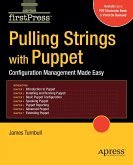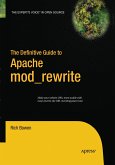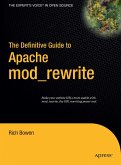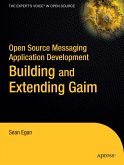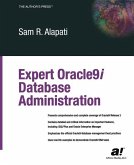Employing a practical, hands-on approach, Linux in Small Business: A Practical Users Guide author John Lathrop guides the reader through a multitude of scenarios commonplace in a real-world corporate environment. Eschewing evangelism, Lathrop instead presents real Linux solutions that reduce software purchases, enhance stability, and lower the costs of maintenance and hardware upgrades. Precursory material includes instruction regarding the installation, configuration, and basic operation of Red Hat 7.2, the latest version of the leading Linux distribution. Readers are then guided through a series of practical lessons covering networking (particularly in a heterogeneous Linux/Windows environment), databases, the use of popular office products such as StarOffice, and basic system administration. Tackling many of these issues from the perspective of a native Windows user, newcomers to Linux will have no problem following the lessons.
Lathrop also shows how Linux can be integrated in a mixed Linux/Windows environment, which results in saving money and avoiding workplace disruption due to otherwise unwieldy platform migrations. Linux has now matured to the point where, with modest instruction and familiar GUI tools, a Windows user or administrator can install, set up, and use Linux effectively in a business, workgroup, school, or government office.
Linux in Small Business: A Practical Users Guide covers more material than most Linux books; the scenario-based LAN section alone covers DHCP, DNS, NAT, Samba, NFS, Sendmail, Apache, and PostgreSQL. Readers will find the coupling of this breadth of information with the goal-oriented presentational approach employed by Lathrop to be a refreshing and methodical strategy for quickly implementing a Linux-based solution.
Hinweis: Dieser Artikel kann nur an eine deutsche Lieferadresse ausgeliefert werden.
Lathrop also shows how Linux can be integrated in a mixed Linux/Windows environment, which results in saving money and avoiding workplace disruption due to otherwise unwieldy platform migrations. Linux has now matured to the point where, with modest instruction and familiar GUI tools, a Windows user or administrator can install, set up, and use Linux effectively in a business, workgroup, school, or government office.
Linux in Small Business: A Practical Users Guide covers more material than most Linux books; the scenario-based LAN section alone covers DHCP, DNS, NAT, Samba, NFS, Sendmail, Apache, and PostgreSQL. Readers will find the coupling of this breadth of information with the goal-oriented presentational approach employed by Lathrop to be a refreshing and methodical strategy for quickly implementing a Linux-based solution.
Hinweis: Dieser Artikel kann nur an eine deutsche Lieferadresse ausgeliefert werden.

